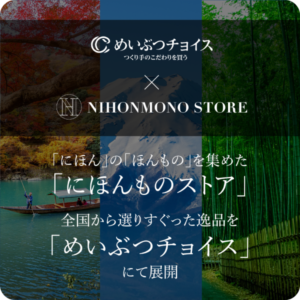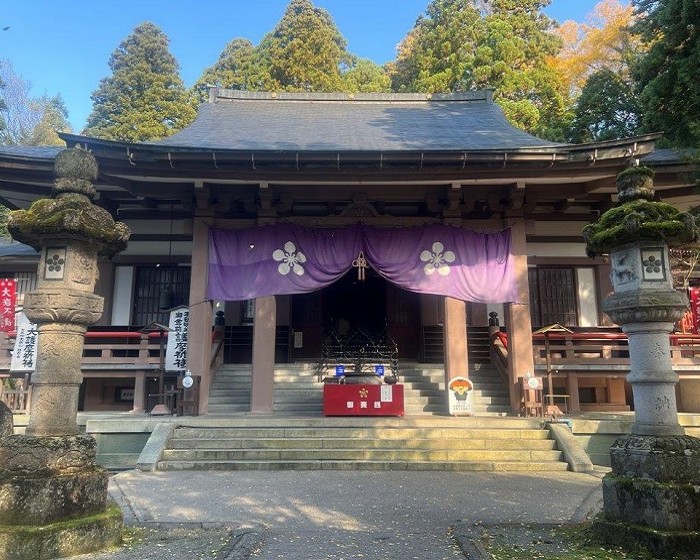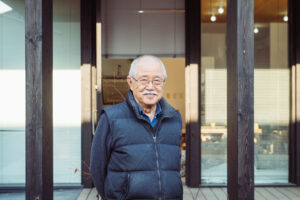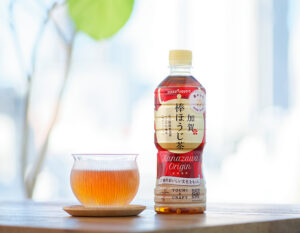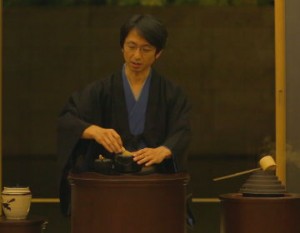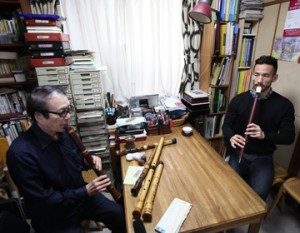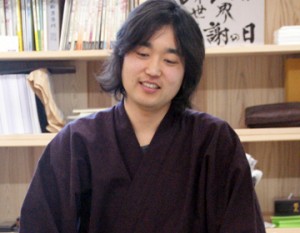Toyama Prefecture is famous for its magnificent mountains, including Kurobe-dake, the beautiful Toyama Bay, and the glass art that has been nurtured by the culture of medicine sales. However, it is probably not widely known that the prefecture has the third largest number of temples in Japan. Even in a city where Buddhism is deeply rooted, many people from all over the country visit the popular power spot of Oiwasan Nissekiji in the town of Kamishiro, Shinkawa-gun.
Oiwasan Nissekiji, the head temple of the Shingon Mikkyo sect, which boasts a history of 1,300 years.
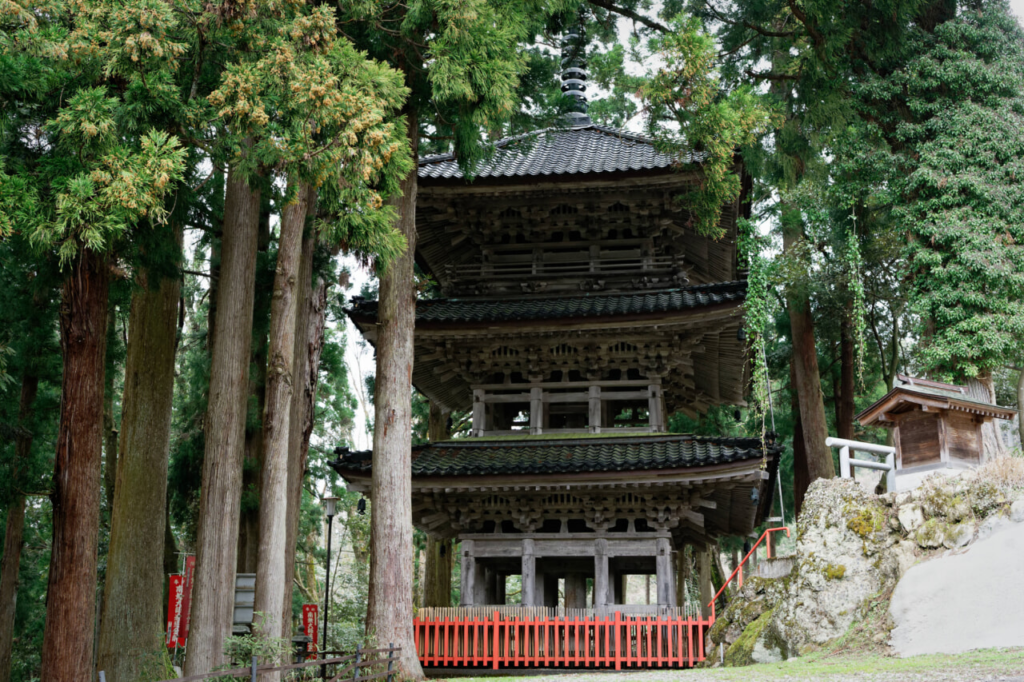
The Daiwa-san Hiei-ji temple, a Shingon esoteric Buddhist temple, was founded in 725, about 1,300 years ago, and enshrines Fudo Myo-o as its principal deity. The town of Kamiichi, in the Nakasugawa district of Toyama Prefecture, where the temple is located, is a town where nature and culture coexist, with the peaks of the Northern Alps, including the main peak of Tsurugidake (2,999 meters above sea level), visible in the southeast. Tsurugidake has long been a mountain of mountain worship, with temples and shrines nearby, and Hieizan is also a popular power spot with the locals.
The charm of the temple, which has been called “Oiwa no Fudo-san” (Fudo of Oiwa) and is well-known

One of the reasons it is considered a power spot is probably the great variety of Buddhist statues and buildings that can be found within Nisseiji Temple. One of these, the nationally designated historic site and important cultural property “Daiganzan Nisseiji Magai Butsu (Buddhist statues carved into the rock) Fudō Myōō Zō (image of Fudō Myōō)” is a stone Buddha statue that boasts the largest scale in Hokuriku. The 313cm high statue of Fudo Myo-o and the 214cm high statues of the two attendants, carved into a huge tuff wall, are works from the late Heian period and are known as relics of mountain Buddhism. The huge Fudo Myo-o statue, which is carved at a slight angle, has a powerful presence, as if it is about to speak to you.
In addition, there are many other buildings at Nisseiji Temple that are said to bring good fortune, such as the oldest three-storied pagoda in Toyama Prefecture, the Aizen-do Hall, which is said to bring good fortune in love and fertility, the Agaku-kutsu Cave, which is said to ward off evil, the Jizo-do Hall, which is said to bring good fortune in life and longevity, and the Meoto-iwa (Husband and Wife Rocks), which are said to bring good fortune in marriage. Perhaps this is why Nisseiji Temple is considered a power spot, as it is able to accommodate the wide-ranging wishes of its visitors in one place.


To the left of the main hall is the sacred water “Fujimizu”, which has been selected as one of the “66 Famous Waters of Toyama” . It is called Fujimizu because it gushes forth from a wisteria tree, and it is also famous as a sacred water that is beneficial for the eyes. About 300 years ago, a peasant who was blind received a dream telling him that “washing your eyes with the water that gushes forth from the roots of the wisteria tree at Hieizan Temple will help you see”.
With anecdotes like this, it is said that the Kaga clan has many famous doctors but no eye doctors, because the great doctor of the Oiwa Fudōsan shrine cures eyes. Fujimizu water can be collected for free, and many people visit every day. By the way, it is said that chanting the mantra of Fudō Myōō is even better when collecting this water, so please give it a try.
A genuine “waterfall training” experience that purifies the body and mind with the five senses

Nisshō-ji Temple is famous for its various ascetic practices, including waterfall training, Buddhist statue painting, and visits to the 88 sacred sites of the Shikoku pilgrimage, as well as for its connection to mountain worship and the Shugendō mountain asceticism tradition. At the Roppon Waterfall, which is located right next to the main hall, you can cleanse your body and mind by washing away the “six desires” that arise from the six roots of perception (the eyes, ears, nose, tongue, body, and mind) as taught by Buddha, by dressing in white and immersing yourself in the water. The solemn and extraordinary waterfall experience that can only be had here will surely enhance the power spot effect. Incidentally, the six dragon heads from which the waterfall flows are said to represent earth, water, fire, wind, space and consciousness, and are said to have the meaning of purifying people’s six roots.
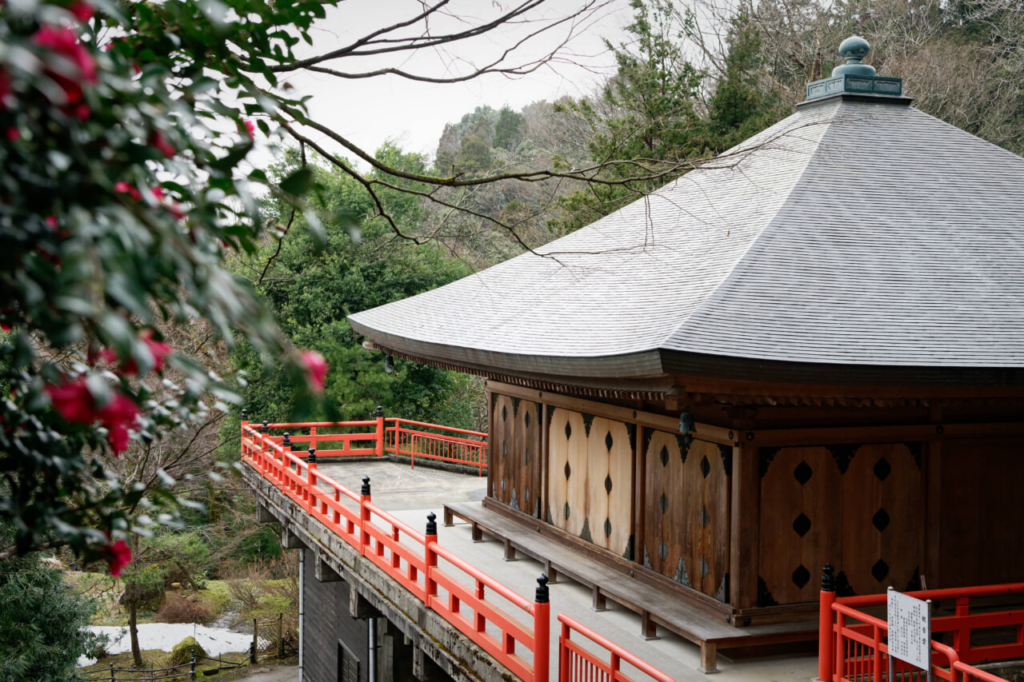
Nisseiji Temple has a long history of around 1300 years, but of course it has also faced various difficulties, such as fires, over the years. However, the head priest, Kojo Nakata, says that the reason why the Fudo Myo-o Magai-butsu has remained in perfect condition to this day is because the temple has adopted new knowledge and technology in each era.
“Temples must learn about new things, compare them with the techniques of their predecessors, and not be fixated on one idea, but instead consider a variety of things. From now on, we will continue to make the temple suitable for the times, without excluding such ways of thinking.” Nisseiji Temple is a popular power spot for modern people, where both body and mind can be purified. The term “power spot” itself is not something that has been around for a long time, but was created by trends and the media. Visitors to Nisseiji Temple in search of such a place are unlikely to be of a particular sect or even to have any religious bias. However, if this is the standard for modern-day worship, then that is fine. Of course, it is also fine to visit for waterfall training in the style of Shugendo. In this day and age, when diversity is being touted, becoming a place that welcomes people with diversity is probably what the chief priest means by “a temple suited to the times”. Why not leave the hustle and bustle behind and recharge your batteries here, spending some time in a peaceful place?
